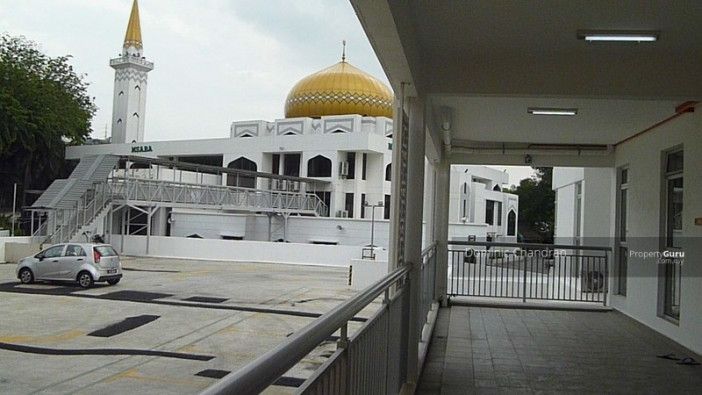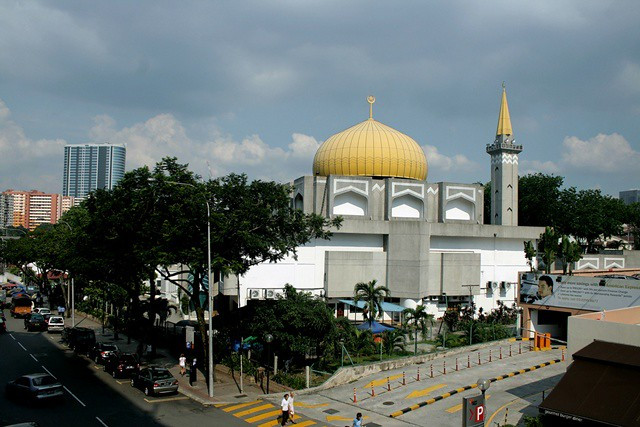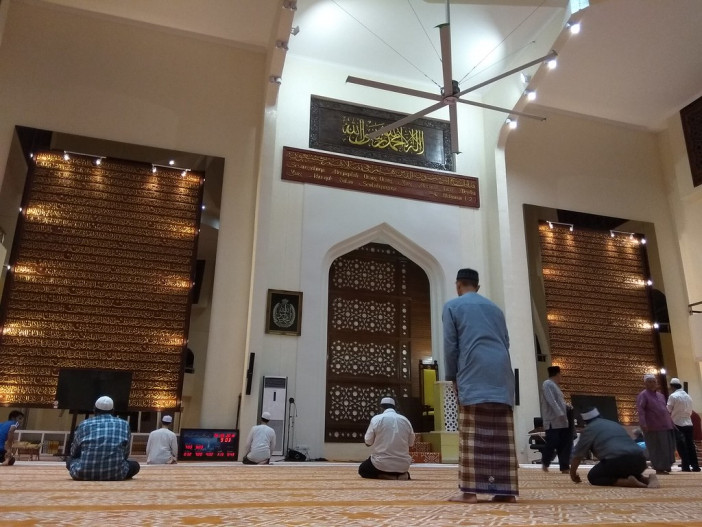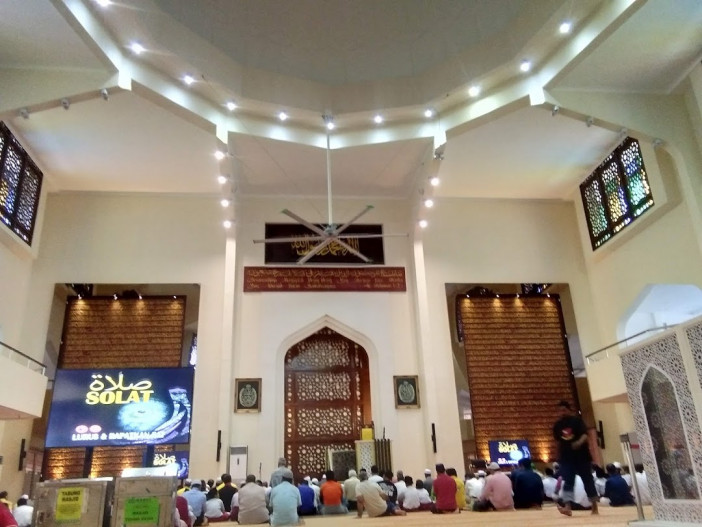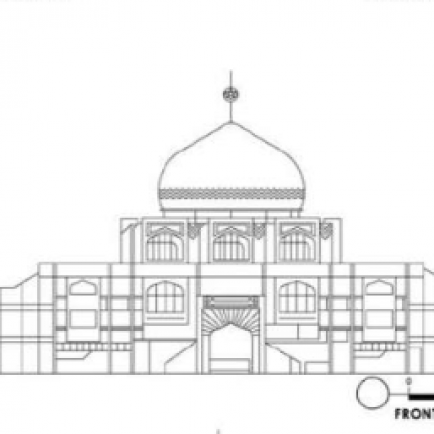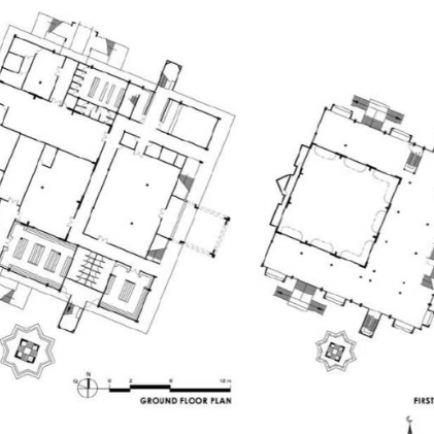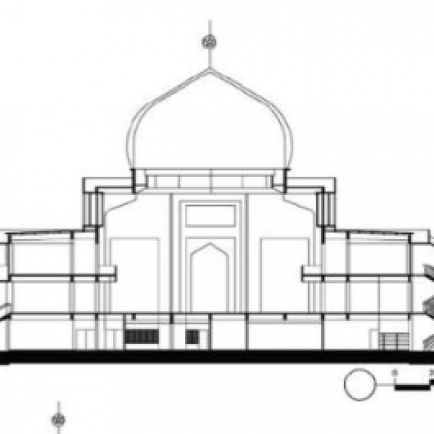Saidina Abu Bakar As-Siddiq Mosque
History
Planning for the construction of the mosque began in 1979 and completed in March 1982.
The site was officially handed over to the contractor 18 July 1980. The direction of the qiblat was consented by The Mufti of the Federal Territories, S.S. Datuk Sheikh Abdul Mohsein bin Haji Salleh on 24 August 1980. Ground levelling work started in September 1980.
The mosque was handed over officially to the government on 29 March 1982.
Urban and Architectural
The architecture is of traditional Malay mosque architecture with a minaret (43.3 m), arches, dome (16.6 m wide and 24 m from the floor), and motifs, but modern in form. It has an open concept, where air flow is allowed into the mosque as the door are made from hard wood. Islamic patterned holes are carved in between the motifs.
Its architectural designs are used in the construction for the Maldives National Mosque
The square layout plan of the prayer hall is based on the traditional Mughal model; despite the lack of a courtyard, it has a wide overspill prayer area and staircase access from various sides of the building. On the first floor is the female prayer gallery, while the ground floor accommodates the entrance area, ablution facilities, classrooms, office spaces and a library. The main prayer hall is naturally illuminated and ventilated through the stained-glass windows and the sliding screen doors. The cube form is strengthened with the exposed dome support structures and pointed mihrab niche, where the minbar is also placed. A pair of large Quranic tablets made out of timber is set symmetrically on the front qibla wall
Description
The Saidina Abu Bakar As Siddiq Mosque (MSABA) is a prominent mosque in Bangsar, Kuala Lumpur, Malaysia. The mosque was named after Muhammad's successor (Caliph) Abu Bakr.
It is amongst the earliest classic examples of a postmodern mosque in Malaysia. Nestled in the urban suburb of Bangsar in Kuala Lumpur, the mosque represents the pan- Islamic style that is heavily influenced by the Mughal and Arabian architectural typologies, designed to suit the local vernacular language in a modern manner. The mosque’s construction was initiated by the local Muslim residents in Bangsar of around 3,500 people living and working in the surrounding areas in 1976.
References
https://en.wikipedia.org/wiki/Saidina_Abu_Bakar_As_Siddiq_Mosque
https://itc.gov.my/listings/masjid-saidina-abu-bakar-as-siddiq/
Aziz, A. A., 2016. MASJID - Selected Mosques and Musollas in Malaysia, ATSA Architects Sdn. Bhd.
Details
الموقع
Jalan Ara, Bangsar, Kuala Lumpur, Federal Territory of Kuala Lumpur, Malaysia
عدد المصليين
3200
المالك / المتبرع
Federal Territory Islamic Religious Council
المعماري
تاريخ البناء
1982
Area
1784
الرسومات المعمارية
الخريطة
History
Planning for the construction of the mosque began in 1979 and completed in March 1982.
The site was officially handed over to the contractor 18 July 1980. The direction of the qiblat was consented by The Mufti of the Federal Territories, S.S. Datuk Sheikh Abdul Mohsein bin Haji Salleh on 24 August 1980. Ground levelling work started in September 1980.
The mosque was handed over officially to the government on 29 March 1982.
Urban and Architectural
The architecture is of traditional Malay mosque architecture with a minaret (43.3 m), arches, dome (16.6 m wide and 24 m from the floor), and motifs, but modern in form. It has an open concept, where air flow is allowed into the mosque as the door are made from hard wood. Islamic patterned holes are carved in between the motifs.
Its architectural designs are used in the construction for the Maldives National Mosque
The square layout plan of the prayer hall is based on the traditional Mughal model; despite the lack of a courtyard, it has a wide overspill prayer area and staircase access from various sides of the building. On the first floor is the female prayer gallery, while the ground floor accommodates the entrance area, ablution facilities, classrooms, office spaces and a library. The main prayer hall is naturally illuminated and ventilated through the stained-glass windows and the sliding screen doors. The cube form is strengthened with the exposed dome support structures and pointed mihrab niche, where the minbar is also placed. A pair of large Quranic tablets made out of timber is set symmetrically on the front qibla wall
Description
The Saidina Abu Bakar As Siddiq Mosque (MSABA) is a prominent mosque in Bangsar, Kuala Lumpur, Malaysia. The mosque was named after Muhammad's successor (Caliph) Abu Bakr.
It is amongst the earliest classic examples of a postmodern mosque in Malaysia. Nestled in the urban suburb of Bangsar in Kuala Lumpur, the mosque represents the pan- Islamic style that is heavily influenced by the Mughal and Arabian architectural typologies, designed to suit the local vernacular language in a modern manner. The mosque’s construction was initiated by the local Muslim residents in Bangsar of around 3,500 people living and working in the surrounding areas in 1976.


